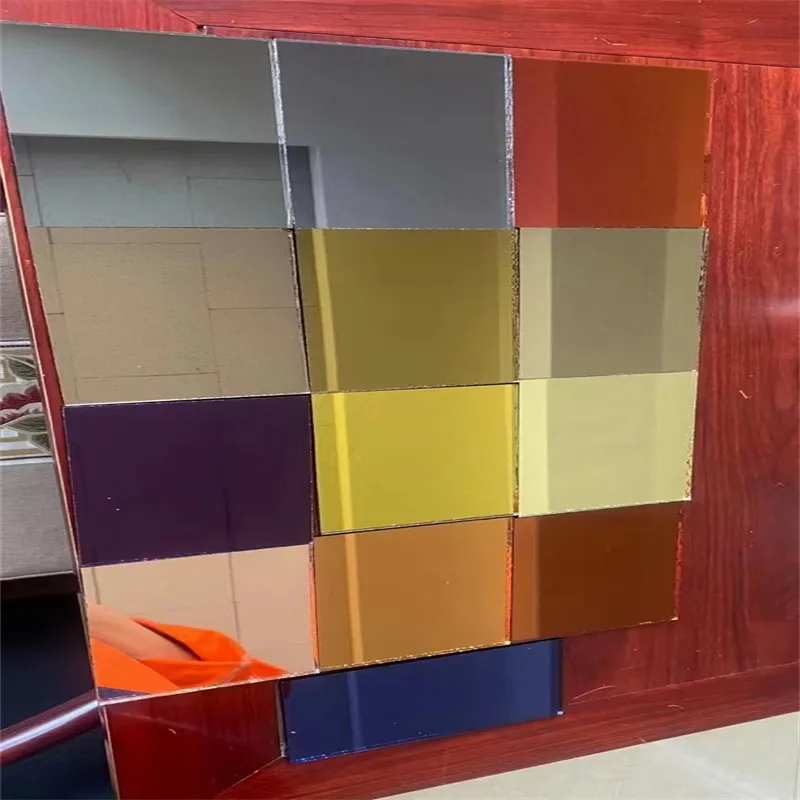Nov . 08, 2024 04:33 Back to list
Expansive Glass Panels for Modern Architectural Design and Natural Light Enhancement
The Aesthetic and Functional Appeal of Large Glass Panels in Modern Architecture
In contemporary architecture, large glass panels have emerged as a defining feature, transforming the way we perceive and interact with spaces. This design element not only elevates the aesthetic appeal of buildings but also serves a multitude of functional purposes that enhance the experience of occupants. The integration of expansive glass panels into structures—be it residential homes, corporate offices, or public buildings—reflects a modern ethos, one that emphasizes transparency, light, and fluidity.
Aesthetic Enhancement
One of the most compelling reasons architects opt for large glass panels is their ability to create a seamless connection between indoor and outdoor environments. In an era where urban dwellers often feel disconnected from nature, these expansive glass surfaces blur the lines between the two realms. The use of large glass panels invites natural light to flood interior spaces, illuminating them in ways that artificial lighting simply cannot replicate. This natural light not only enhances the visual appeal of a space but also has been shown to improve the well-being and productivity of its occupants.
Moreover, large glass panels can transform the aesthetic character of a building. They lend a sleek, modern appearance that can be both minimalist and luxurious. The reflective qualities of glass can create stunning visual effects, especially during sunrise and sunset, as they catch and refract light. In urban settings, buildings clad in glass can reflect surrounding landscapes and skyscrapers, creating an ever-changing dynamic with the environment.
Functional Benefits
Beyond aesthetics, large glass panels offer several functional benefits that enhance a building's utility
. An essential aspect of modern architecture is energy efficiency. Today’s glass panels can be engineered to include various energy-conserving technologies, such as low-emissivity (low-E) coatings, which reduce heat loss while allowing natural light to permeate spaces. This innovation aids in regulating indoor temperatures, reducing the reliance on heating and cooling systems, and ultimately leading to lower energy costs.Additionally, the structural capabilities of large glass panels have improved significantly. High-strength, tempered glass allows for larger spans without compromising safety or performance. This structural advancement fosters open floor plans that promote a sense of space and freedom, meeting the demands of modern lifestyles, where flexibility and openness are paramount.
large glass panels

Cultural Reflections
The use of large glass panels also speaks to broader cultural and societal shifts. In an increasingly globalized world, there is a push towards transparency in both business and government. Buildings that utilize glass prominently can symbolize openness and honesty, qualities that resonate with contemporary values. For corporate offices, large glass facades can communicate a sense of trust and accessibility to clients and employees alike.
Furthermore, these glass structures often become iconic landmarks within cities. The visual impact of large glass panels can define a skyline, making them focal points that draw people in and encourage community engagement. This has been evident with famous buildings like the Glass Pavilion in Toledo, Ohio, and the Apple Park campus in Cupertino, California, where glass plays a crucial role in the building’s identity.
Challenges and Considerations
However, the integration of large glass panels is not without its challenges. Concerns related to privacy, glare, and heat gain must be addressed in the design process. Architects and builders must carefully consider the orientation of glass surfaces, the use of shading devices, and possibly the inclusion of smart glass technologies that can adjust opacity based on the sunlight intensity.
Additionally, maintenance and cleaning of large glass surfaces can be labor-intensive, necessitating innovative solutions to ensure longevity and performance. Yet, with advancements in cleaning technology and building management systems, these challenges can be effectively managed.
Conclusion
In conclusion, the allure of large glass panels in modern architecture lies in their ability to enhance aesthetic appeal while providing a range of functional benefits. They symbolize a modern architectural language that prioritizes light, transparency, and a harmonious relationship between the built environment and nature. As we move forward, it is likely that the use of large glass panels will continue to evolve, shaping the future of our skylines and the spaces we inhabit. The marriage of beauty and practicality that large glass panels exemplify is undoubtedly one of the cornerstones of contemporary architectural design.
-
Safety and Style with Premium Laminated Glass Solutions
NewsJun.24,2025
-
Reinvents Security with Premium Wired Glass
NewsJun.24,2025
-
Premium Float Glass Line for Modern Architecture
NewsJun.24,2025
-
Low Emissivity Glass for Energy-Efficient Architecture
NewsJun.24,2025
-
High-Performance Insulated Glass Solutions for Modern Architecture
NewsJun.24,2025
-
Elevates Interior Style with Premium Silver Mirror
NewsJun.24,2025
Related PRODUCTS














